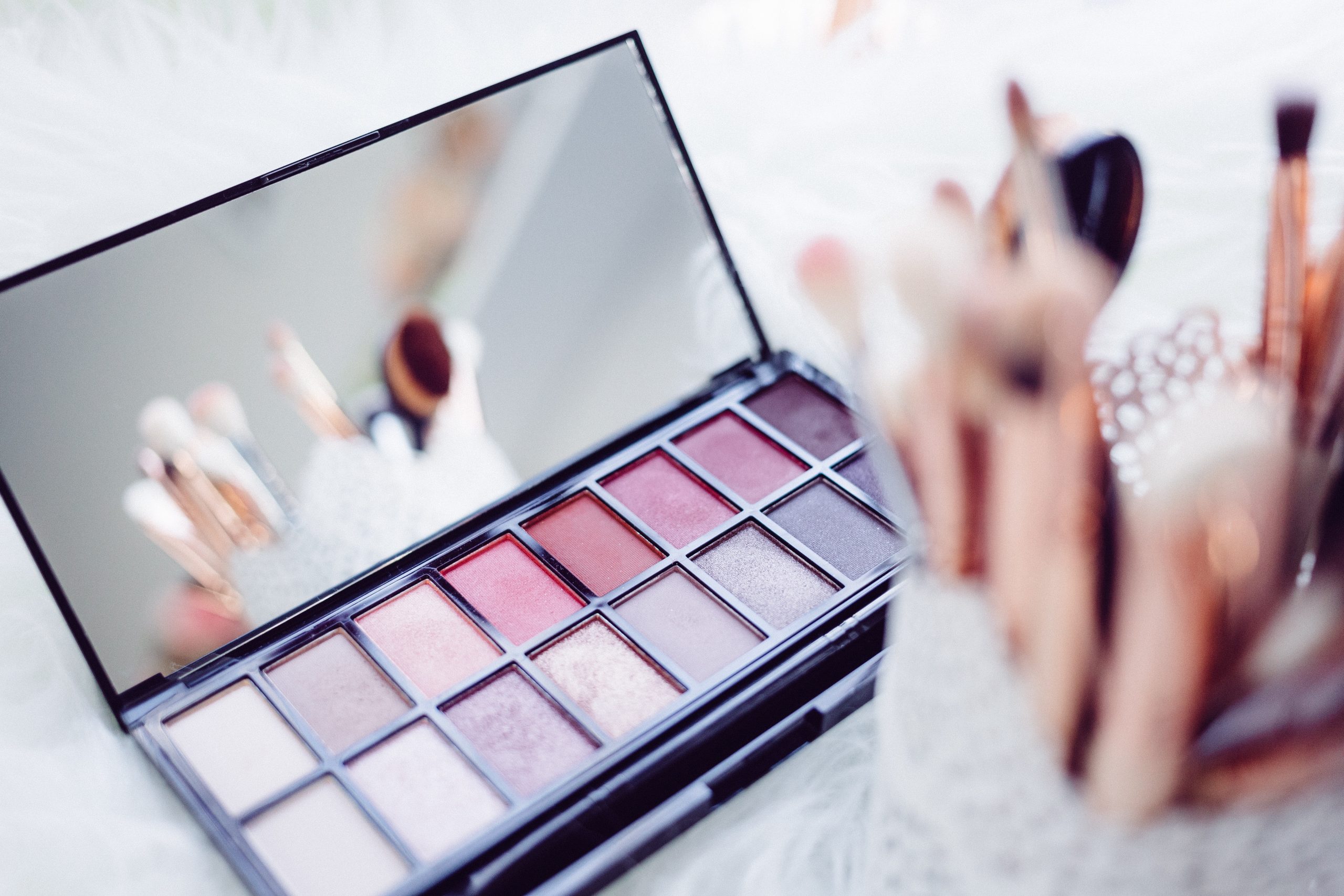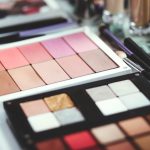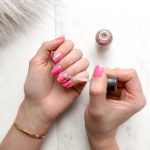This list of tips can help you better understand yourself and your preferences, needs, and buying behavior.
STEP 1: Create a makeup inventory
Stop before you buy another product! We’ll go over what you have purchased before, what has worked (or not) and what lessons can be learned from previous purchases. You can improve your business by identifying what you have done well and where you have made mistakes.
You should keep a record of your products so that you can use them regularly. You may want to use a formal inventory system, such as a bullet journal or Temptalia’s Vanity, if you find it difficult to remember everything. You can sort or find items easily with a digital version (like what eyeshadows or MAC products you own).
You can use the Archive feature to keep track of products that you have purchased, tried and no longer possess. It’s just as important to know what products didn’t work as it is to remember what worked!
You can temper your excitement if you notice a color you like but it’s in liquid lipstick form in the future.
Here are some features you may want to include in your spreadsheet or journal:
- Brand + Shade
- Lipstick) Lipstick)
- You may also want to add additional information, such as whether the product is liquid or cream.
- Color
- Additional parameters such as undertones and finishes may be helpful depending on the number of products and how you view color.
- Price
- If you’re keeping track of your spending, you can put the retail price or the price that you paid.
- Photos/Swatches
- You can also include photos/swatches that you have taken of your products if you are feeling especially creative!
STEP 2: How to declutter your makeup collection
You may have already made the purchase or you have made some fantastic purchases that you don’t want to give up. If that is the case, you can move on. If you’ve felt that you’ve accumulated too much, or you’ve not been as selective as you’d like to be, now is the time to go through your possessions with a more mindful approach.
Let me introduce you to: makeup decluttering or makeup destashing. What is decluttering exactly? Decluttering is removing makeup products you don’t use anymore from your collection. These are products that take up space, may create noise, make it harder to locate/see other products, and have been used less frequently or rarely.
You may recognize some of these tips if you’ve read my previous article How to organize your makeup collection.
When the amount of makeup that you own begins to cause you negative reactions or feelings, it is time to evaluate what you have and why. It may be time to get rid of it. There’s nothing wrong with buying more makeup if you’re happy with what you’ve got and you don’t have any other reason to reduce your collection. It’s not about who has the biggest collection or who can make do with the smallest.
You don’t need to make it manageable for anyone else. It just has to be manageable to you.
These are the first five questions that I ask myself when I am trying to decide if I should keep or throw away a product.
- Can I use this product in the way that I intend?
- How long ago did I last use this?
- Last time I used this product, did I like it?
- What other products (whether similar in color or function), do I use more frequently and/or prefer it to?
- Can I imagine myself using this product again?
What are the obvious things to declutter?
The easiest products to let go are the ones that are expired, whether you follow strict use-by dates (on most labels) or if you go by smell/texture/performance tests. You may have kept products past their expiration dates because they are sentimental. Look through your memories to see if the product is adding to the memory, or if it’s already there.
If you have sentimental items, consider separating them out and finding ways to honor and display them instead of storing them in a drawer or box.
It should be easy to say goodbye to the products that didn’t work for you. You’ve probably tried them, disliked them, and have never used them again. You may feel that these products look bad on your skin ( wrong colour, one star), are difficult to use, or wear poorly.
You can’t let go of products that didn’t work for you, so put them aside. Then, use them again and reassess whether they add usability or joy to your existing items.
What else should you declutter?
These are the products that make me waffle. I have seen other readers and members of the community talk about them, and I know from my own experience as I become more selective about what I buy.
Expensive failures. Money’s been spent. Keep a product that you don’t want and won’t use. It’s just taking up space. By keeping the product, you won’t get your money back.
Products that are just okay. When you have a product that is only OK but you never use it because you dislike it on you, or you seldom use it for any reason (e.g. Maybe you like a certain color only for special occasions. This leads me to the next point …),. Or, have a product with better performance that’s comparable in purpose.
Unicorns. You will only have one product of each, for example, a glittery, super-shiny highlighter. It’s about whether you enjoy, use, or need it in your collection. You might only have one because you didn’t enjoy the product, but you felt compelled for various reasons to try it.
Limited edition. It’s either you use it or it’s gone. Why not use it or lose it? How many products do you finish? What’s the likelihood of you finishing? How unique, amazing and special is the limited edition item? Would you be devastated if you finished it and used it every day and it wasn’t available anymore even if it was regularly used and finished? Beauty is always changing and there’s something new to try. You might not like the shade you used for the last time.
What if I have trouble decluttering?
Below I have summarized some of the most common reasons I’ve heard for why people keep products that don’t seem to be useful for them (and are rarely or never used). To be clear, curating your collection of makeup is not about making yourself miserable, but rather, it’s all about making you happy. It’s ok if you’re struggling. Everyone’s journey will be different, and some parts may be more difficult for others than others. You may find that success for you is removing one product from your collection. Just make sure to put in the effort necessary to make it work for you.
If your mental block is not just a feeling of having wasted money, but one that goes deeper into a fear of not being able afford to buy products, decluttering can be an effective way to reduce the clutter. Store the decluttered items in a secure place until you’re able (to the extent you may be able) to overcome this fear.
Decluttering does not mean minimalism, capsule collections, or striving for a certain aesthetic or collection size. Anyone who adopts a minimal lifestyle through the acquisition of new things comes from a position of privilege. The goal is to adopt more conscious purchasing habits, be more aware of what and how we use our collections and accept that some products may not work for us, or we should have bought something else.
“I’ve already spent money on that, so I have to use it, because I wasted it!” There is no need to punish for past mistakes if you have other products you could be using. It’s supposed to be fun and creative. It’s important to learn from past mistakes to make better choices in the future.
“What if I need this product-I’ve-used-once-and-doesn’t-fit-my-preferences-at -all someday?” That excuse can work a few times, but it can’t be the excuse used for every single item you have and never use. Does this one day seem realistic? You may not like neutrals, but you are entering graduate school or a career which often demands neutrals. This is a good excuse. But if teal eyeshadow makes you look bad and you want to remove it from your face every time, what exactly is the someday that you’re searching for? You need to be realistic when it comes time to make changes.
“I will regret getting rid of it!” Put everything that you are willing to part ways with, but fear you may regret doing so into a small box. Put the box in a place you don’t see it often, such as under your bed or at the back of your closet. After a few weeks of leaving it, think about whether or not you forgot to put any products in it.
“The packaging is so pretty!” If you find the design/packaging/presentation attractive, then it’s not makeup, it’s art. Art is to be appreciated, so you bought 3D artwork. You want it on display and not hidden in a bin, drawer, or anywhere else.
STEP 3. Questions to ask before you purchase
One of the most important things to do when adjusting your purchasing habits is to be more thorough in the process. It is the time you spend deliberating on the purchase. This may include a variety of questions, checks, steps and processes, depending on your needs and what suits you. These are the steps I take to make purchases, big or small. They can be used for beauty products, but also in general.
IS IT WITHIN MY BUDGET FOR BEAUTY (OR “FUN” MONEY) FOR THE TIME PERIOD?
Budgeting is a great way to track your monthly spending. It will help you determine if there are any areas where you overspend. You’ll also have a better understanding of how much money comes in and goes out. You can limit your spending for a certain period of time for each category. For example, $X is the maximum amount you are allowed to spend on makeup per month. You may find that stricter rules or specific limits are more effective than arbitrary ones if you have a hard time reducing your spending.
WHAT IMPACT WOULD THIS PURCHASE HAVE ON MY FINANCIAL OBLIGATIONS?
A financial goal helps me to control unnecessary and excessive spending, because I am always thinking of the bigger picture. It could be a vacation, paying back student loans, saving for retirement, purchasing property or other worthy goals.
I enjoy having both short and long-term goals so I can feel more satisfied when I contribute to a shorter-term goal, while working towards a longer-term one. As an example, I contribute as much money as possible to my pre-tax retirement every year to achieve my long-term financial goal to be able to retire earlier (which is actually the goal to work because I want to and not because I am forced to).
WHAT WILL I DO WITH THIS PRODUCT? WHAT PART OF MY COLLECTION DOES IT COMPRISE?
It should add value to your existing products. It should have a purpose, and you should expect to enjoy and use it. Many of the questions I ask myself when deciding whether to keep or discard a product are also those I ask to decide whether to keep it. Will I use it? How often will I be using it? Do I already have something similar (does this really seem to be better?) why? ), etc.
DO I HAVE MY RESERVES ON IT?
You should try to find reviews, swatches or even test it out in person if you can! It may take some time for you to find reviewers who are aligned with your values and that you can trust, or to skim and filter through the dozens of reviews posted on retailer websites. You’ll need to think about your past experience with the product and brand, as well as whether you are comfortable buying blindly, or would rather wait until you see some reviews.
STEP 4: TRACK NEW PURCHASES CRITICALLY
You’d be wrong if you thought that the process ended there. That’s how we accumulate products we don’t like and use! After you decide to buy something, you should try it out to see how well it suits you. You can then see if it works for you and your collection.
Returning a product you don’t like, and that you bought with care (not all products work out!) is a good idea if you live in an area that allows exchanges or returns. It is important to return products in a timely fashion if you want to avoid having a large collection of products that don’t work. It’s nice to have the option to return products, but this shouldn’t be used as an excuse to purchase products without any thought.
You will be more likely to use and enjoy the products if you organize your stash. Add it to your inventory if you want to keep track of everything you own. And enjoy!



